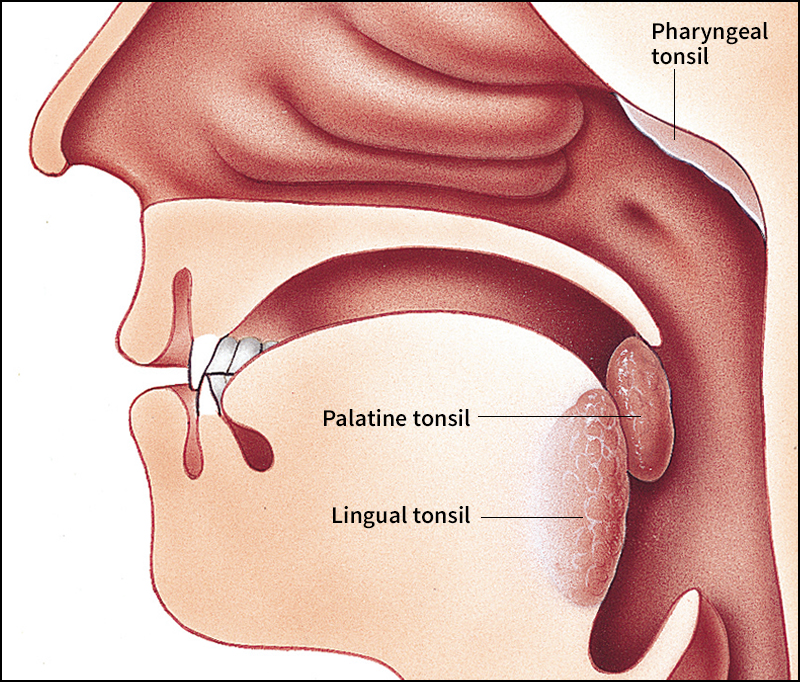Tonsil is any of several masses of specialized tissue found in the throat. The term commonly refers to a pair of deep pink, almond-shaped structures, one of which is on each side of the back of the throat. These are the palatine, or faucial, tonsils. There are two other kinds of tonsils–the pharyngeal tonsils and the lingual tonsils. Pharyngeal tonsils, commonly called adenoids, grow in the back of the throat near the nasal passage. Lingual tonsils are found at the back of the tongue. Together, the three types of tonsils form a continuous ring around the back of the throat.

No one really knows the purpose of tonsils, but many medical scientists believe they aid in protecting the respiratory and digestive systems from infection. Tonsils consist of a type of tissue called lymphoid tissue. This tissue produces white blood cells, known as lymphocytes, that help fight infection. For example, lymphocytes release antibodies that destroy invading bacteria and viruses or make them harmless (see Lymphatic system [Lymphoid tissue]). In addition, the surface of the palatine tonsils has many deep pits, called crypts. Bacteria and food particles collect in these crypts. Each lingual tonsil has a crypt, but the pharyngeal tonsils have none.
Sometimes the palatine or pharyngeal tonsils become badly inflamed and must be removed by a surgical operation. As children grow older, their tonsils tend to decrease in size.
